Jason Davis • May 24, 2016
Mostly smooth sailing in San Luis Obispo: LightSail 2 completes day-in-the-life test
The Planetary Society's LightSail 2 spacecraft breezed through a major systems test today, demonstrating the CubeSat can successfully deploy its antenna and solar panels, communicate with the ground, and unfurl its 32-square-meter solar sails in space.
The loaf of bread-sized satellite will eventually attempt to demonstrate the first controlled solar sail flight in Earth orbit. But first, it had to pass a rigorous systems test to demonstrate its readiness, allowing engineers to shake out bugs before launch day.
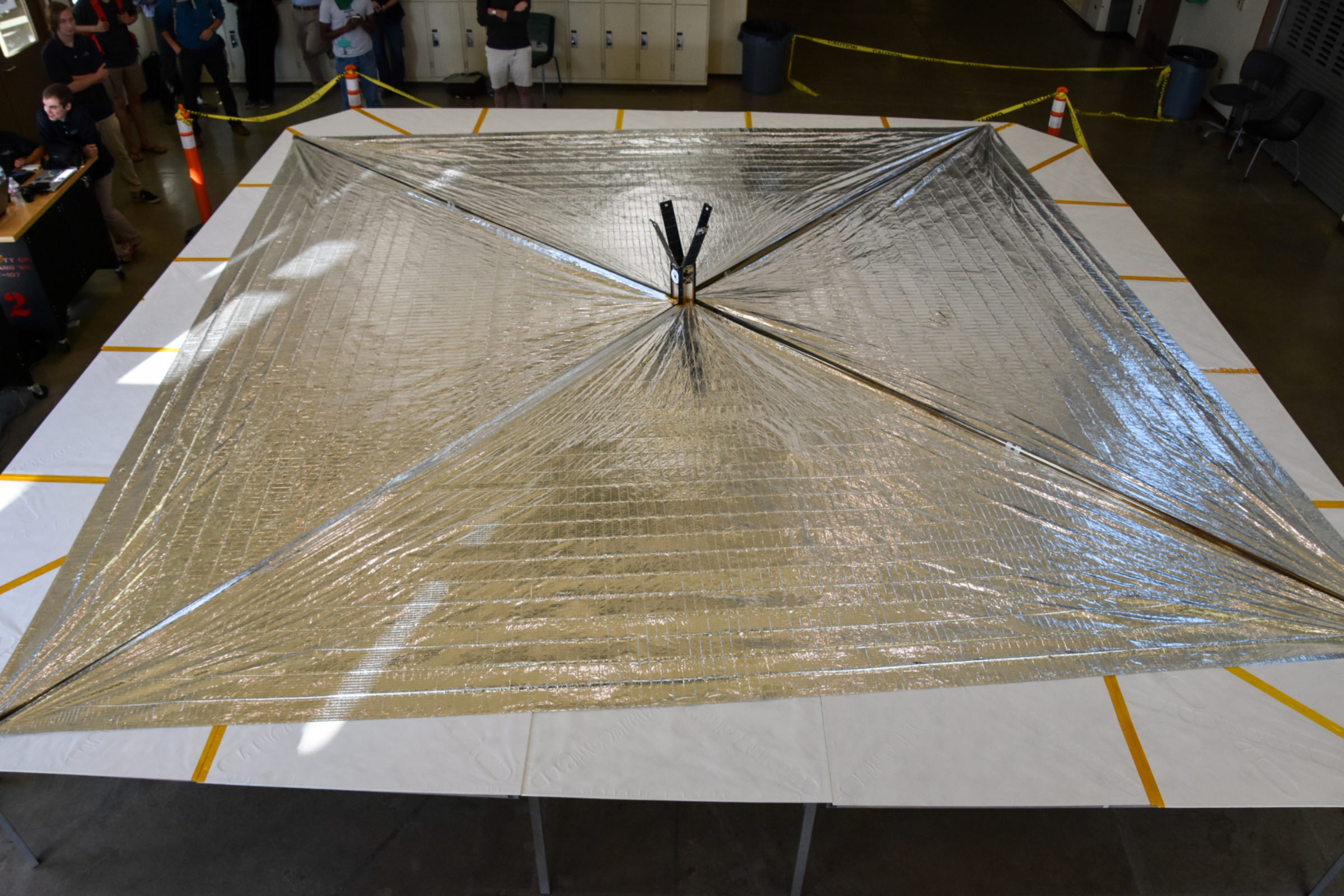
More LightSail 2 day-in-the-life test coverage
Want more pictures? View our entire photo gallery on Flickr.
You can also read our day-in-the-life test preview story here.
Monday's "day-in-the-life" test simulated all of the mission's critical moments in a flight-like environment. It was held on the campus of Cal Poly San Luis Obispo on California's central coast. Cal Poly is the spacecraft's primary ground station, and is a birthplace of CubeSat technology.
"Basically, today is the full mission compressed into one day," said Dave Spencer, LightSail's project manager, addressing reporters before the test began. "This is the most complex test we'll do during development."
Dozens of students lined glass-paneled garage doors outside a high bay at the Bonderson Engineering Center, trying to watch the test and snap photos of Planetary Society CEO Bill Nye. Nye was joined by Society board member Robert Picardo, known for his role on the TV series Star Trek: Voyager.
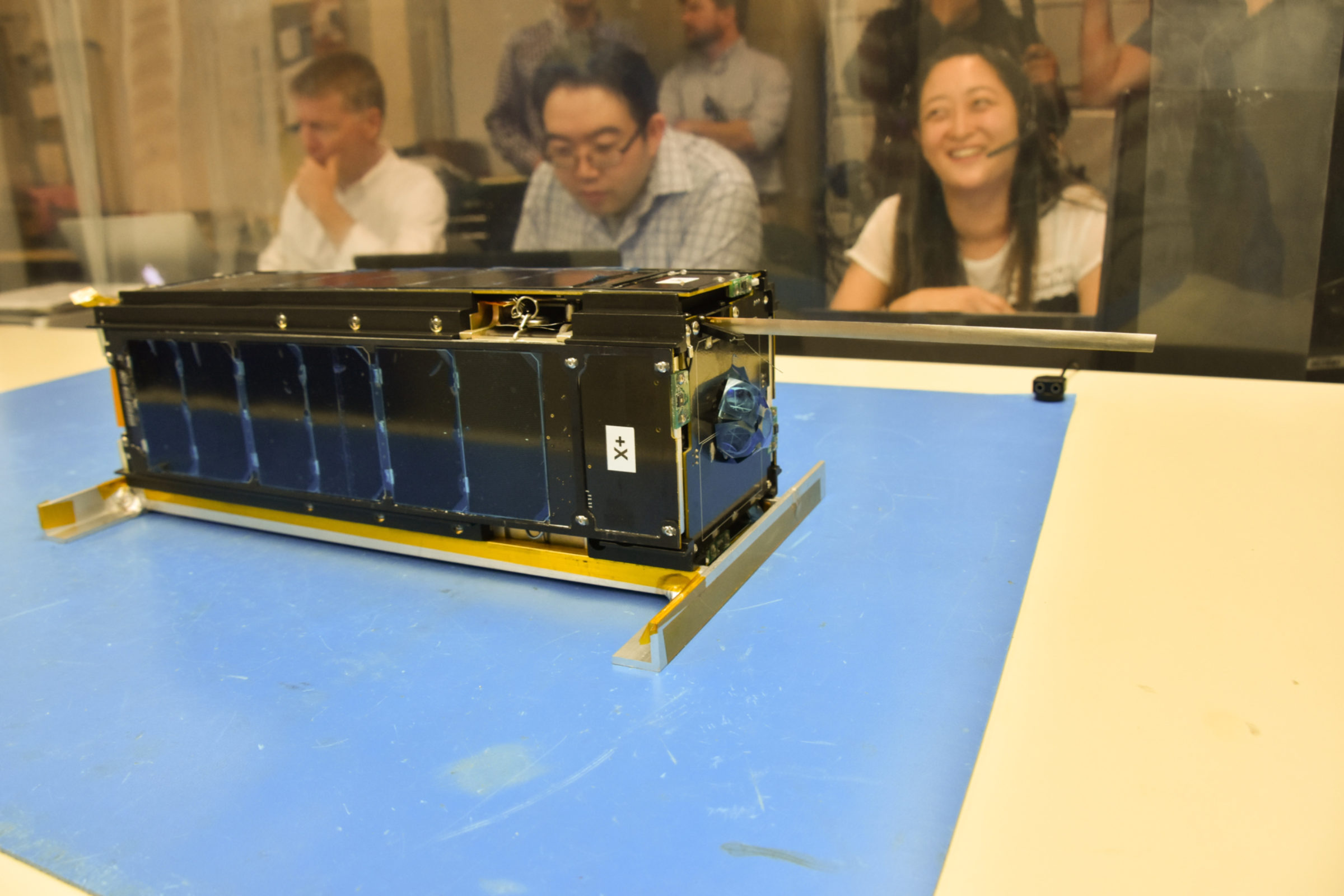
Inside the high bay, Nye stood next to a large, low-friction deployment table with LightSail sitting at the center. The spacecraft's operations team hovered over laptops along one side of the room. Program manager Bruce Betts gave the team a go for sail deployment, and after a brief countdown from five, the deployment command was sent.
LightSail responded almost instantly. The spacecraft's four, 4-meter booms unwound smoothly, and in less than three minutes, the triangular sail sections were pulled into a tight square.
"Wow, look at that!" Nye said to the team, as applause filled the room. "You ran it all the way out—there's no slack!"
It was a picture-perfect deployment. But the team quickly analyzed telemetry from the spacecraft and determined the booms had stopped a few centimeters short of their intended length. Worse yet, the deployment motor still appeared to be on.
LightSail didn't respond to commands to shut off the motor, so the team manually powered off the spacecraft to prevent the risk of damage. That's something they obviously can't do in space, but the problem is already being investigated.
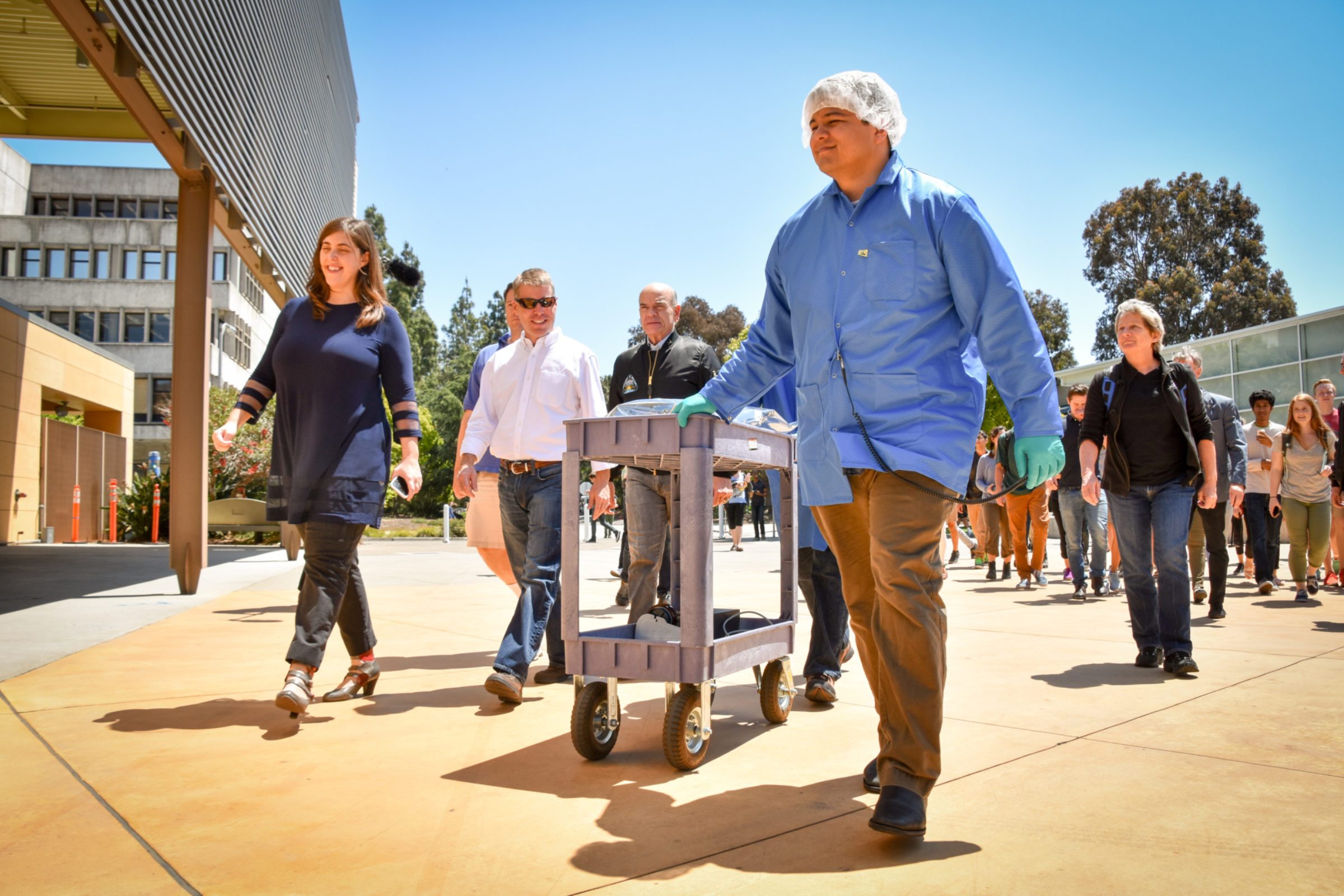
Despite the glitch, the test was an overwhelming success. It was completed in about five hours—a stark contrast to LightSail 1 day-in-the-life testing, which was delayed several times as engineers worked through a myriad of hardware issues and applied last-minute fixes.
"I think what was reflected here today was the level of testing that has gone into the mission," said Barbara Plante, LightSail's systems engineer. "I'm quite pleased with the whole feel of the team—very integrated; we've done this a couple times already."
Engineers from NASA's Marshall Space Flight Center were on hand to observe the test, hoping to learn lessons applicable to NEA Scout, a solar sailing CubeSat that will hitch a ride to the moon on the Space Launch System's inaugural flight in 2018. NEA Scout will leave lunar orbit and visit a near-Earth asteroid.
"The success of another organization working on this is very encouraging," said Alex Few, a mechanical design specialist for NEA Scout. Few said he was particularly interested to observe how the LightSail team simulated mission operations, and see how ground controllers coordinated with the engineering team.
"Seeing that play back and forth, making that as real as possible—that was beneficial and something I'll be taking back with me," he said.
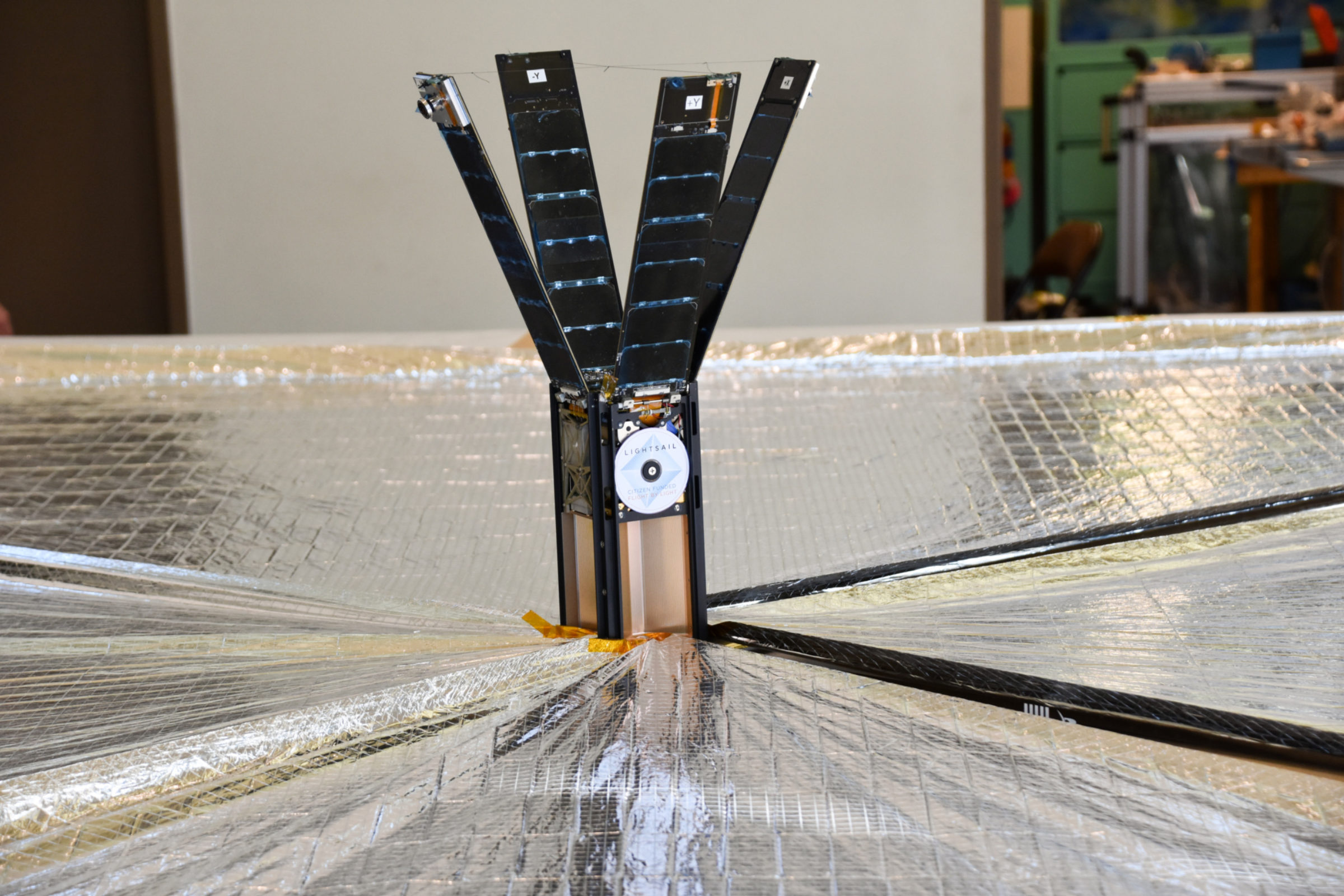
By early evening, the crowd at Bonderson grew thin. Riki Munakata, Stephanie Wong and Alex Diaz—all engineers from Ecliptic Enterprises Corporation, LightSail's primary contractor—began folding the sails to be re-stowed into the spacecraft. Cal Poly's Justin Foley also assisted, having wrapped up his most of his ground systems duties for the day.
But there was still more work to be done. At 8:00 p.m., software engineer John Bellardo was still emailing telemetry log files to the team. Troubleshooting of the sail deployment issue continues. A post-test review will be held tomorrow morning, and LightSail will soon head to Utah State University's Space Dynamics Laboratory for attitude control system testing.
The CubeSat must be ready for delivery in July, when it will be integrated into its partner spacecraft, Prox-1. More challenges remain before LightSail 2 is ready for its moment in the solar photons.
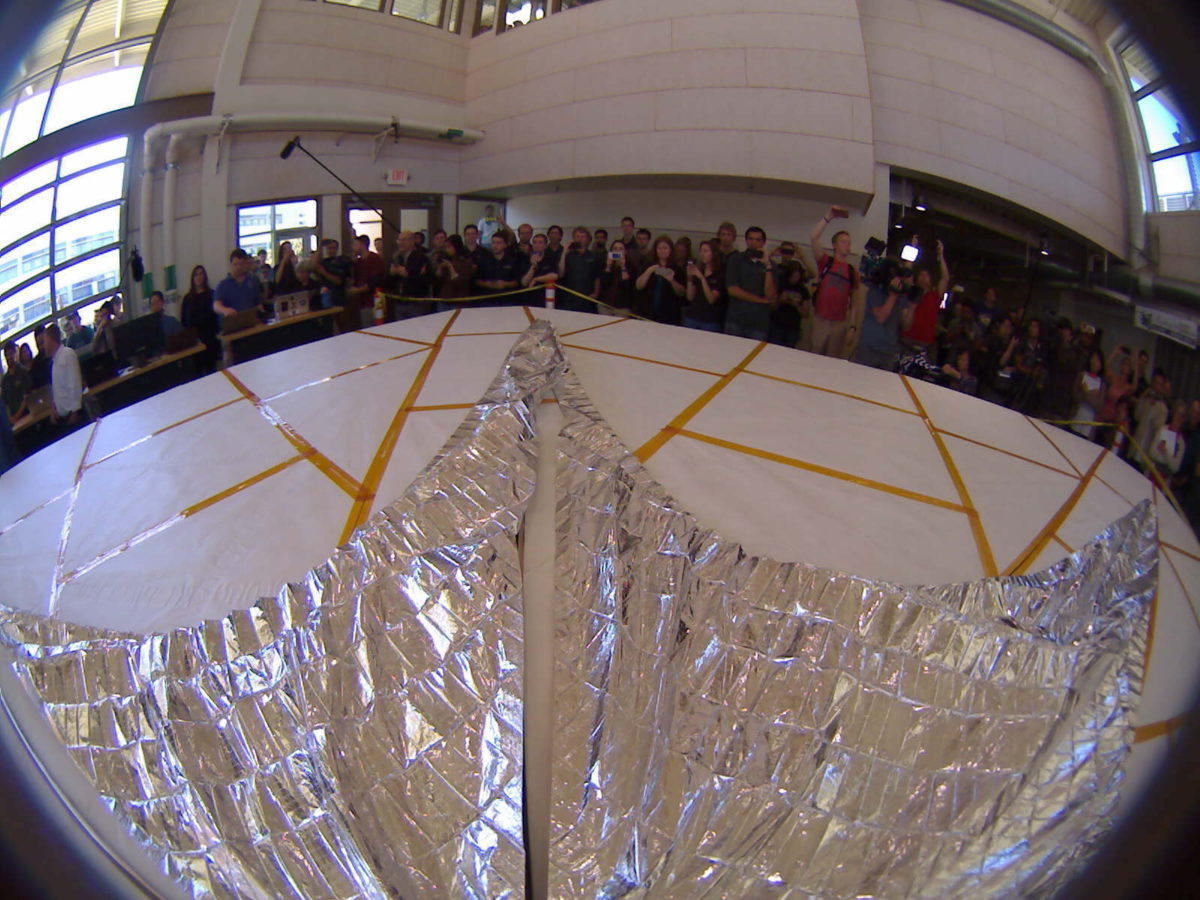
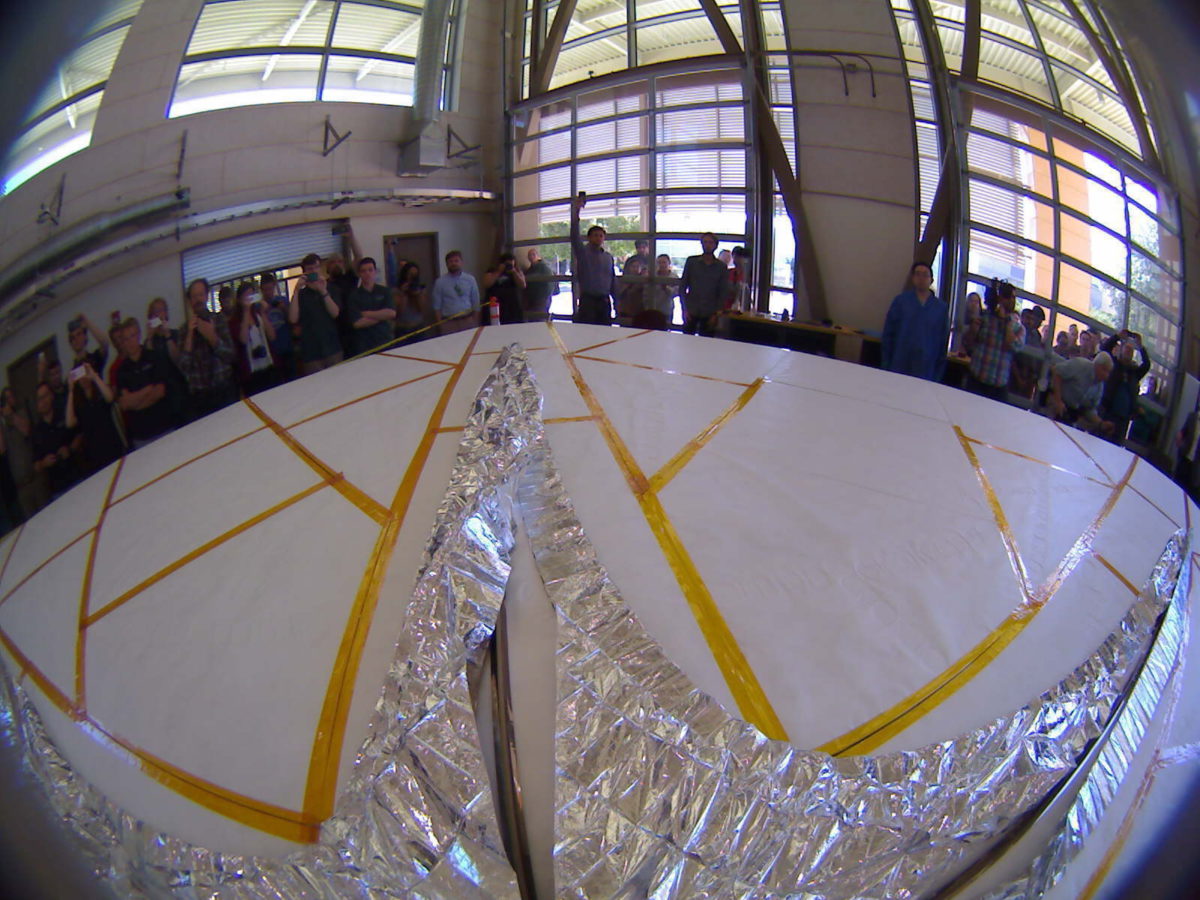
Let’s Go Beyond The Horizon
Every success in space exploration is the result of the community of space enthusiasts, like you, who believe it is important. You can help usher in the next great era of space exploration with your gift today.
Donate Today

 Explore Worlds
Explore Worlds Find Life
Find Life Defend Earth
Defend Earth


